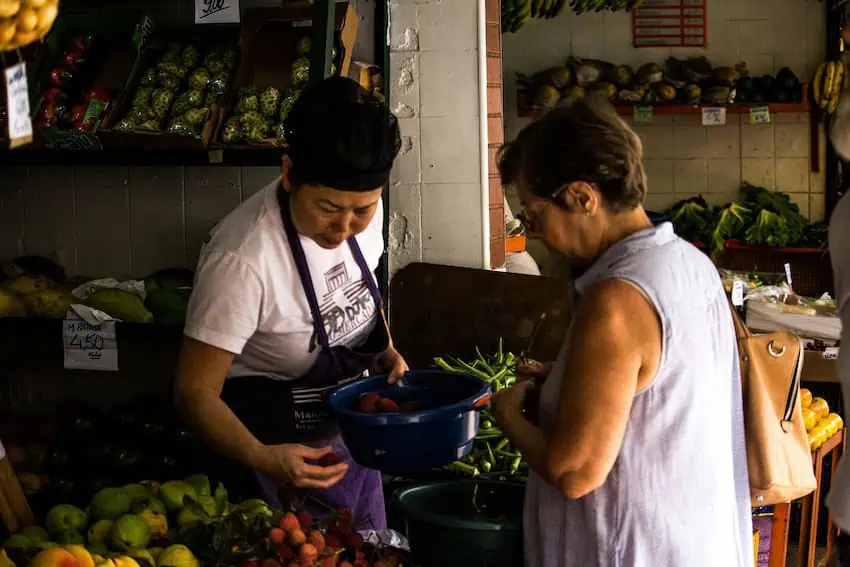In honor of World Statistics Day on Oct. 20, Mexico’s national statistics agency INEGI published a small book presenting the 99 facts you need to know about Mexico.
All week, we will be sharing the book’s contents translated into English.
Here is part 2! Read facts 1-20 here.
21) Mexico has a territorial area of 1,960,646.7 square kilometers. The largest state is Chihuahua, covering 247,412.6 km², while the smallest is Mexico City, with 1,494.3 km².
(Source: INEGI, Geo-statistical Framework – MG, 2020)
Mexico is the 14th-largest country in the world and its capital, Mexico City, is similar in surface area to Rome and London.
22) Out of the 2,427 bookstores registered nationwide in 2024, Mexico City had the highest number with 544, while Campeche had the fewest, with just 14.
(Source: National Directory of Economic Units, 2024)
Bookstores remain unevenly distributed in Mexico, mostly concentrated in the capital and larger urban centers. Access to books and reading materials still varies by region, reflecting differences in cultural infrastructure and local economies.
23) In 2024, 43.9% of households in Mexico had a computer. In 2015, this proportion was 44.9%.
(Source: INEGI, National Survey on Availability and Use of Information Technologies in Households – ENDUTIH, 2015 and 2024)
Computer ownership in Mexican homes has remained almost unchanged for decades. Smartphones have become the main device for connectivity, making access to computers a lesser priority in rural areas.
24) In 2024, 7.6 million households with children in Mexico faced difficulties accessing enough food in quantity or quality, mainly due to a lack of money or resources.
(Source: INEGI, National Survey on Household Income and Expenditures – ENIGH, 2024)
Food insecurity especially affects families with children, highlighting the impact of poverty on nutrition and daily life. Access to healthy foods still varies widely depending on income, region and social support.
25) A head of household is considered the person recognized as such by the other members of the home. In 2023, only 3 out of every 10 households nationwide were headed by a woman.
(Source: INEGI, National Survey on Demographic Dynamics, 2023)
The proportion of female-headed households in Mexico has grown, now accounting for about a third of all homes. Many of these women are also the main breadwinners and caregivers, reflecting both evolving family structures and persistent gender gaps in support and income.

26) In 2024, Mexican households ate corn tortillas and cereals every day of the week.
(Source: INEGI, National Survey on Household Income and Expenditures – ENIGH, 2024)
Tortillas remain a staple food, but their consumption has dropped slightly due to inflation and shifting eating habits. Cereals such as bread and pasta also form an essential part of daily meals throughout the country.
27) Mexico’s highest elevation is Citlaltépetl or Pico de Orizaba, an active volcano that rises 5,636 meters above sea level.
(Source: INEGI, Digital Elevation Models – MDE, 2024)
Located on the border between Veracruz and Puebla, Pico de Orizaba is the highest mountain in Mexico and among the tallest in North America. Its icy summit is a destination for climbers and a symbol of natural diversity in the region.
28) In 2021, 908,000 people in Mexico identified as gender diverse.
(Source: INEGI, National Survey on Sexual and Gender Diversity – ENDISEG, 2021)
This group represents about 0.9% of the population aged 15 and over, including transgender, transsexual, non-binary and other non-normative gender identities. Younger generations are the most likely to openly identify with diverse gender categories, reflecting ongoing changes in social recognition and rights.
29) How long is your commute to work? In 2020, 61.0% of employed people in Mexico took less than 30 minutes to reach their workplace.
(Source: INEGI, Population and Housing Census – CPV, 2020)
Most workers have relatively short commutes, but there are still large regional differences. In Mexico City, travel times can be two hours or more.

30) Between April and June 2025, of the 59.4 million employed people in Mexico, 1.2 million held positions of management, coordination or leadership — and 40.4% were women.
(Source: INEGI, National Survey on Occupation and Employment – ENOE, second quarter 2025)
More women are taking up leadership roles, but they are still underrepresented in senior positions. Promoting gender equality remains essential to closing gaps in workplace power and advancing opportunities across sectors.
31) In 2023, nearly one million people living in Mexico were born abroad.
(Source: INEGI, National Survey on Demographic Dynamics – ENADID, 2023)
Most foreign-born residents come from the United States, Central and South America, and Europe. Migration patterns are driven by work, family, study, and, in some cases, humanitarian reasons.
32) Between March 2015 and March 2020, 6.9 million people in Mexico moved to a different municipality or state — an amount equal to twice the population of Guerrero.
(Source: INEGI, Population and Housing Census – CPV, 2020)
Internal migration is driven by factors like employment, family needs, education and increasingly, security concerns.
33) In 2024, heart disease was the most common cause of death in Mexico, with 192,563 recorded deaths.
(Source: INEGI, Statistics on Registered Deaths – EDR, 2024)
Other leading causes were diabetes and malignant tumors. The high rate of heart disease is linked to aging, lifestyle and chronic health risks, and highlights the importance of medical care and prevention.
34) In 2022, 8 out of 10 people in Mexico believed that family members are responsible for caring for older adults.
(Source: INEGI, National Survey for the Care System – ENASIC, 2022)
Family caregiving remains the norm in Mexican society, with most care for elderly people provided by relatives — especially women. However, there is growing public debate on the need to expand public support systems as the population ages.
35) Between April and June 2025, 2.3 million people worked in paid domestic roles in Mexico. This includes tasks such as cleaning, cooking and/or caregiving.
(Source: INEGI, National Survey on Occupation and Employment – ENOE, second quarter 2025)
Domestic work is a major source of employment, especially for women and in urban areas. Despite contributing significantly to household well-being, domestic workers often face precarious conditions and limited labor rights.
36) Between 2016 and 2024, Michoacán was the state with the largest increase in average monthly household income, with a rise of 34.4%.
(Source: INEGI, National Survey on Household Income and Expenditures – ENIGH, 2016 and 2024)
Despite the improvement, income levels in Michoacán remain below the national average, underlining continued regional disparities.
37) Between 2001 and 2024, the proportion of Mexican households with internet access increased nearly twelvefold — from 6.2 to 73.6%.
(Sources: INEGI. Availability and Use of Information Technologies in Households Module – MODUTIH, 2001; National Survey on Availability and Use of Information Technologies in Households – ENDUTIH, 2024)
Widespread adoption of internet access reflects rapid technological change across the country. Despite progress, significant gaps remain by region and income, and mobile access now accounts for most connections.
38) A warm, humid climate is characterized by high temperatures and abundant rainfall. Tabasco is the state with the highest proportion of its territory under this climate type, at 95.5%.
(Sources: INEGI. Climate – CLIM, 2020; Geo-statistical Framework – MG, 2024)
This climate favors lush vegetation and extensive wetlands, making Tabasco one of the rainiest states in Mexico. The region’s weather patterns shape its agriculture, biodiversity and traditional ways of life.
39) A trámite is any procedure carried out by individuals or organizations with a government institution. In 2023, 81.7% of people in urban areas completed a trámite or requested a public service.
(Source: INEGI, National Survey on Government Quality and Impact – ENCIG, 2023)
Most procedures involve payments, obtaining documents or notary services. While access to digital transactions is growing, many still encounter barriers and prefer in-person visits.
40) Did you know that half of the population (53.7%) who self-identified as LGBTQ+ in Mexico was between 15 and 24 years old in 2021?
(Source: INEGI, National Survey on Sexual and Gender Diversity – ENDISEG, 2021)
Young people are the most likely to openly disclose their LGBTQ+ identity, marking significant generational change in visibility and acceptance.
Mexico News Daily
